HoMA Artist Spotlight: Mitchel Viernes
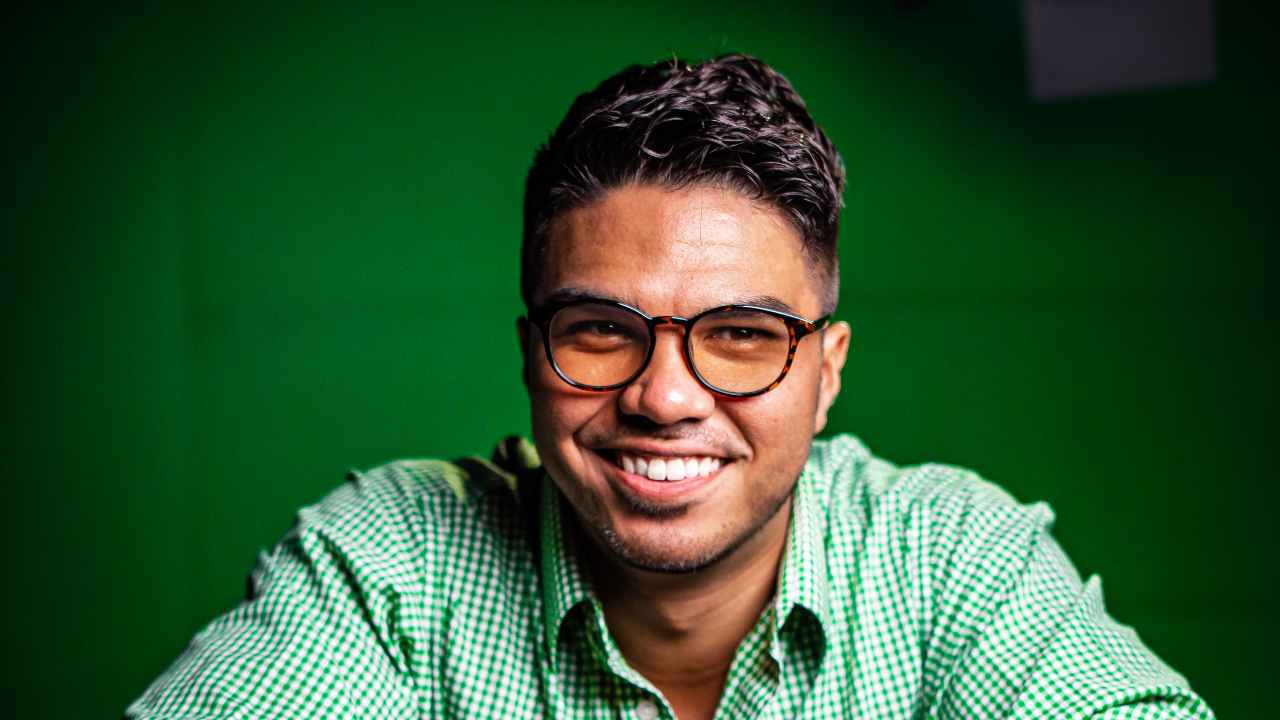
Mitchel
Mitchel Viernes
HoMA is spotlighting the work of artists in our community during these unprecedented times. Earlier this fall, Assistant Curator of Film and Performance Sarah Fang sat down for a virtual conversation with local filmmaker Mitchel Viernes. They talked about what he’s been up to during the pandemic, how he got started in filmmaking, and what keeps him motivated to keep creating.
Mitchel Viernes is a filmmaker from Honolulu, Hawaiʻi. After receiving his first video camera as a birthday gift when he was 10, he followed his passion for visual storytelling while attending Moanalua High School, and eventually went on to receive his Bachelor of Media and Creative Technology at the University of Waikato in New Zealand. Mitchel has since produced several short films and become heavily involved in the local filmmaking scene. In 2017, he received the ‘Ohina Greenlight Award for his Hawaiʻi Science Fiction short Kālewa under the mentorship of Black Panther co-writer Joe Robert Cole. Kālewa went on to premiere at festivals around the country and internationally.
Viernes’ latest feature, Water Like Fire, is making its world premiere at this year’s Hawaiʻi International Film Festival. The film is available to anyone in the United States virtually through the festival’s online platform and for in-person screenings at Consolidated Theaters Ward on Sunday, November 29th. His newest short, Charity, is also screening virtually in the Made in Hawaiʻi Shorts Program.
Sarah Fang: This pandemic has hit all of us in different ways and has obviously impacted the local film industry greatly. We’ve now been in this for more than six months, so I just wanted to ask how you’ve been holding up personally?
Mitchel Viernes: It’s been okay. I’m super grateful, because with my day job at ‘Iolani School where most of what I do is I help produce and video content for web social media, I’ve been able to work from home. In the midst of a lot of people being unsure of where they’re gonna be getting their income from, I’ve been very fortunate to have that security. Of course, there were plenty of ideas of my own personal things I want to work on that had to be put on hold. So being forced into lockdown allowed us to dig deeper into our own personal stuff at the same time. Because there’s no excuse, now, for there not being time to work on our own personal stuff.
With the lockdown forcing you to dig deeper, were you able to get a lot of new ideas or new ways of thinking that you weren’t able to before?
I always constantly have ideas for stories that I try to write down. But something that did take up a lot of my attention is, I’m putting the finishing touches on a feature film that I’m working on, Water Like Fire. It got accepted into HIFF and it’ll be making its world premiere in November. It’s a complete side passion that I only got to work on when I had time.
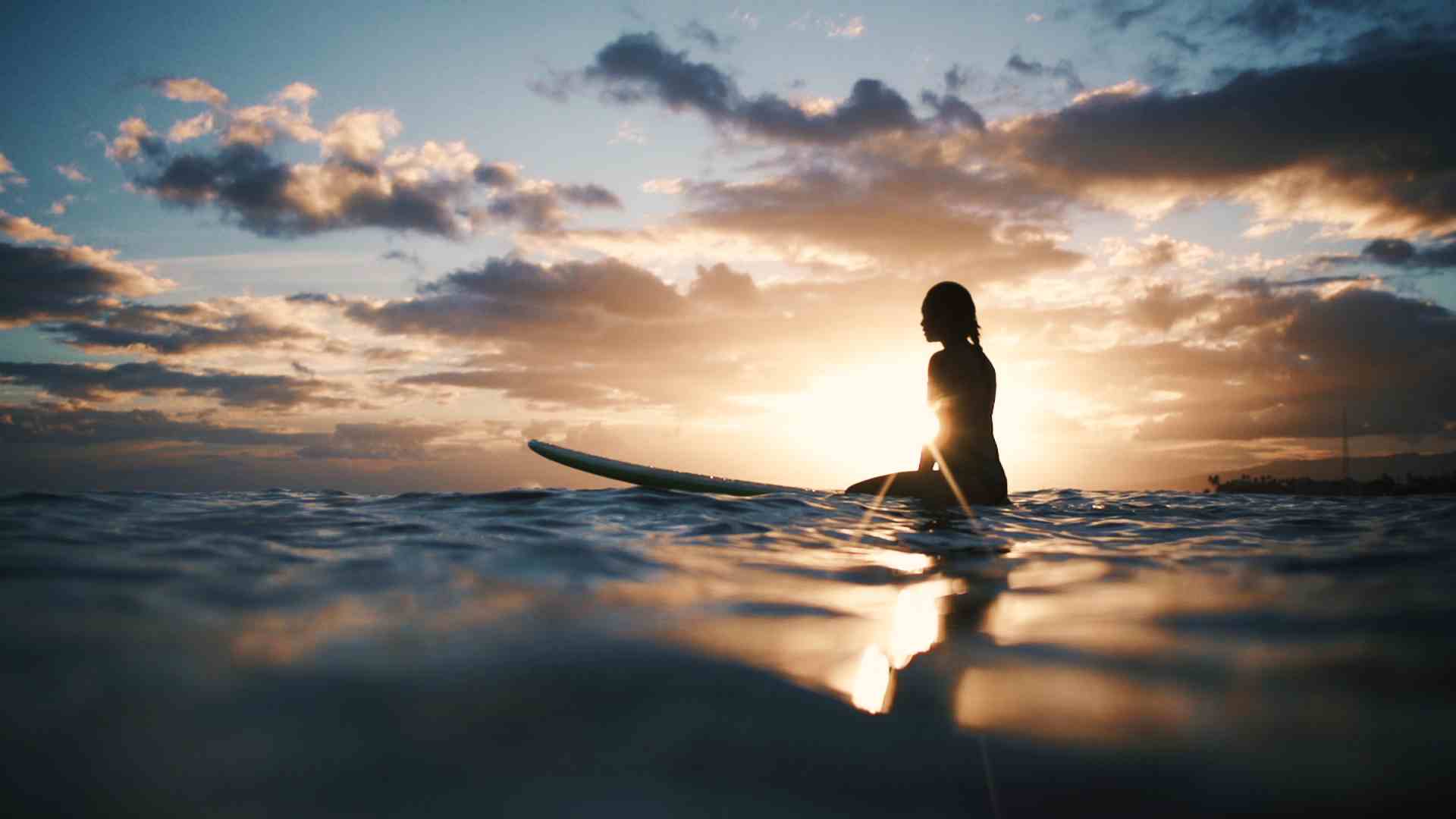
Water like Fire
A still from Water Like Fire
And did the lockdown provide the time for that?
Yeah, because I was already getting worried about the deadline to submit to HIFF. I had already contacted Becky [Stochetti, Executive Director at HIFF] and said “Hey, I don’t think I’ll be finished in time for my submission. Do you guys take works in progress?” I was already beating myself up about sending something that wasn’t completely finished, but I was able to have the time to get it to a point where I was kind of okay with it to submit. They still accepted it, so I was super grateful for that.
What do miss the most about pre-pandemic life?
I’m definitely itching to do something—my own personal type of art or film. There have been moments as the lockdown eased up that I started getting excited, started planning things, trying to think of ways of being creative in terms of shooting. Is there a way for me to write in masks so that my actors could be wearing masks?
Shooting has definitely gotten harder, but how have you stayed inspired and motivated?
Something I actually realized recently was that a lot of us are watching a lot of stuff—Netflix, HBO, Hulu, whatever—it’s been nice to have the time to be able to sit and watch more films, with an analytical eye, instead of coming home, tired from the day job and turning on something to just unwind. It was a nice reminder that as important as it is to work on your craft and produce stuff, consuming other people’s art is also really important and beneficial.
Let’s bring it back to the beginning. When did you know that filmmaking was going to be your life? When was the seed planted?
The seed was definitely planted when I first got a video camera. I was so little, running around the whole neighborhood making these short films with my legos or whatever I had with other kids. I went to Moanalua for high school and because I lived in Pearl City, my GE to go to Moanalua was through their media program. That’s when I really started seriously realizing that this was what my calling was. I recognized it was hard work to produce things, but I got so much joy out of it and thought that if I could make a career out of that, I knew I would have a very happy and fulfilling life.
How did you first get that camera?
I’ve been into movies since forever. Even when I was just a toddler. Jurassic Park was the VHS that my parents would pop in to get me to shut up [laughs]. And I would just be sucked into that. I’m an only child, so you’re kind of also forced to figure out ways to entertain yourself when you don’t have siblings around the house. With my action figures and legos, I would set things up, and do little skits and things. I think my mom recognized my love for that theatricality kind of stuff, and recognized that giving me a camera would be an outlet for me to take it to another level. I owe my mom a lot of thanks, because she’s the one that planted the actual seed for me as a child to do that.
That’s so amazing for your mom to do that! So a few years after your childhood lego shorts and your time in the Moanalua media program, you wrote and produced your first feature, Peter and the Colossus. Can you talk a bit about that project and how you got started?
The story for it originated while I was in college in New Zealand. Over one summer, I went backpacking with a friend through the South Island. We had tents on our back, hitchhiking around and if it started getting dark, we would camp out somewhere. My imagination was wandering while walking through the forest and seeing this giant tree monster walking around, too. It was just a snowball effect from there. That was such a clear vision I had in my head so I started forming a story around that. That was my first attempt at a feature length film. It was 2 hours, and even as I told people the idea of it, I realized how ambitious it was. As an artist, when you look back, we’re all super critical of our old work, even if we recognize it’s something from when we were still growing.

Screenshot of Peter and the Colossus
Still from Peter and the Colossus
But I’m so grateful for Peter and the Colossus. Even though I went to study film in college, Peter and the Colossus in of itself was like an extra film school for me. It was a huge learning process. It has a very special place for me in my heart because even when I go back to watch it, it almost feels like a time capsule, looking back at how, at some parts, naive I was in my ambition. It was a reflection of who I was as an artist, young and still in college, growing up and everything.
This film was also one of the earliest connections we’ve had with you as a filmmaker when it premiered at the Doris Duke Theatre in 2014. Thinking back on that night, how did you feel?
It was my first time having something publicly shown on a big screen for a huge crowd like that. It was pretty surreal, my first real taste of getting to share something like that with the audience—which is my favorite part of it as a whole. When you get to sit down in the theatre and the lights dim down and you kind of get to look and watch—seeing as people jump or cry—that’s the biggest reward possible, just seeing people react to it. We sold out too, we had to turn some people away because we were already at capacity. I was surprised we got so many people to come and see the movie because it wasn’t just family and friends, it was people who I’ve never met who were genuinely interested in what it was.
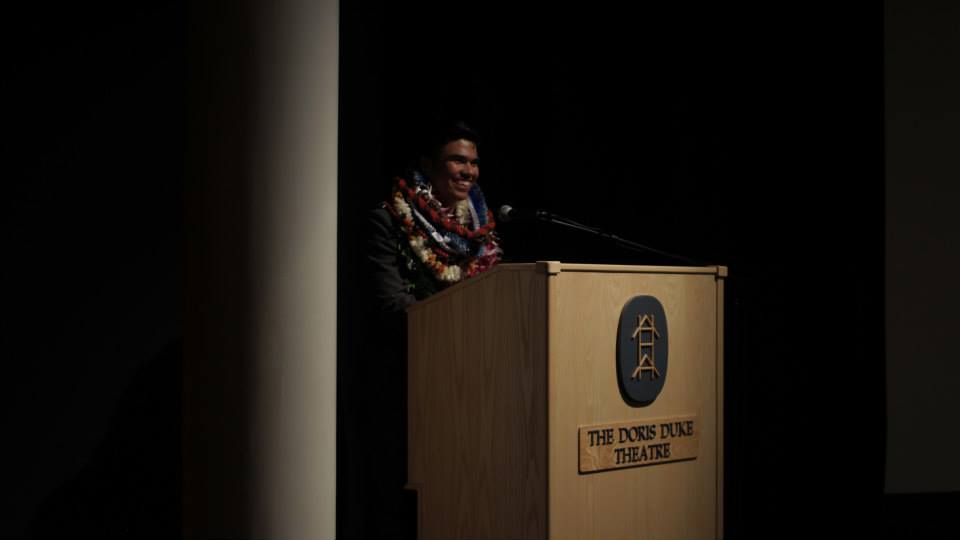
Premiere
The premiere of Peter and the Colossus at Doris Duke Theatre
The next work I wanted to ask you about was Kālewa. We screened it last year as part of an event with ‘Ohina and I have to say, it was so amazing to see a sci-fi short that’s grounded with a Hawaiian perspective. How did that idea start?
Initially, the ideas started from a script I had. I had a film in the ‘Ohina Showcase before and the next year, 2017, was the first year was the ‘Ohina Lab, where they bring in a mentor and give select filmmakers a whole weekend to workshop a script. It just so happened that someone who was going to be a part of the lab, couldn’t make it that weekend. So Gerard Elmore reached out to me and said “Hey, we have this open spot. We have a workshop with the guy who was the co-writer of Black Panther [Joe Robert Cole]. Do you want to come in? ” And I was like, “Yes!” Then Gerard asked “Do you have anything you could bring to the workshop?”
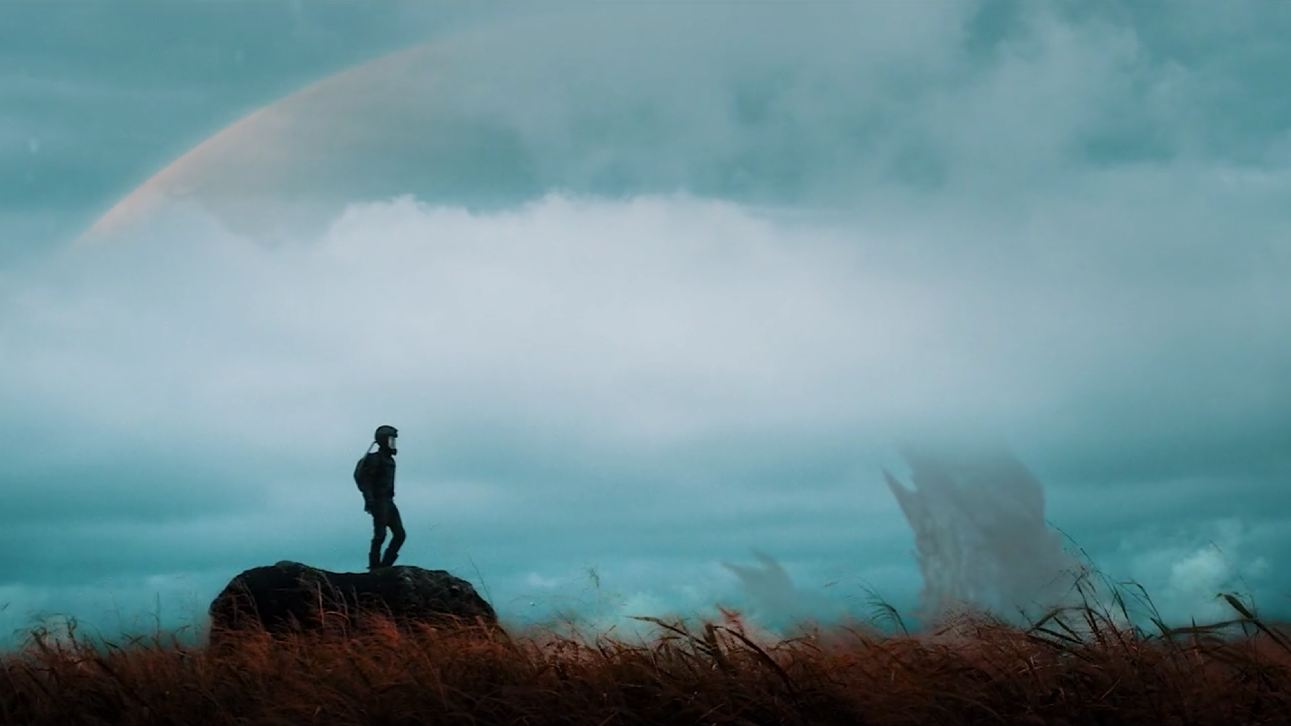
Still from Kālewa
Still from Kālewa
So I went through my journal and the ideas I had and there was one idea that revolved around a brother and a sister and the whole thing was actually about them having a conversation about him leaving for a space mission in their backyard while a party was going on. It was so last minute, I spent that night writing out a draft for that script and I sent it to him that next morning. And after going through the labs, workshopping it and pitching it, they ended up accepting that as the one they wanted to produce over the year. It was crazy how it started as an idea of a brother sister and snowballing into having that whole element of “What if they were a Native Hawaiian family?” and this or that. That’s one of my favorite parts of the writing process. A lot of the ideas start with having an image of a scene that takes place and then usually I’ll start crafting a story around that. I really loved the prospect of it being a sci fi epic but with a really local perspective.
I’m grateful to be a filmmaker in this time because there’s such an incredible surge of local and Native Hawaiian stories in film coming up. To be in the middle of it and have peers and colleagues working on stuff, it’s so exciting to see. Especially with the culture of how things are here in Hawaii, where everyone just supports each other. I’m really excited about the prospect of there being more stories that have local or indigenous people at the forefront as the protagonist or main character in a film. Why can’t we have a Native Hawaiian who is a lead in a sci fi blockbuster?
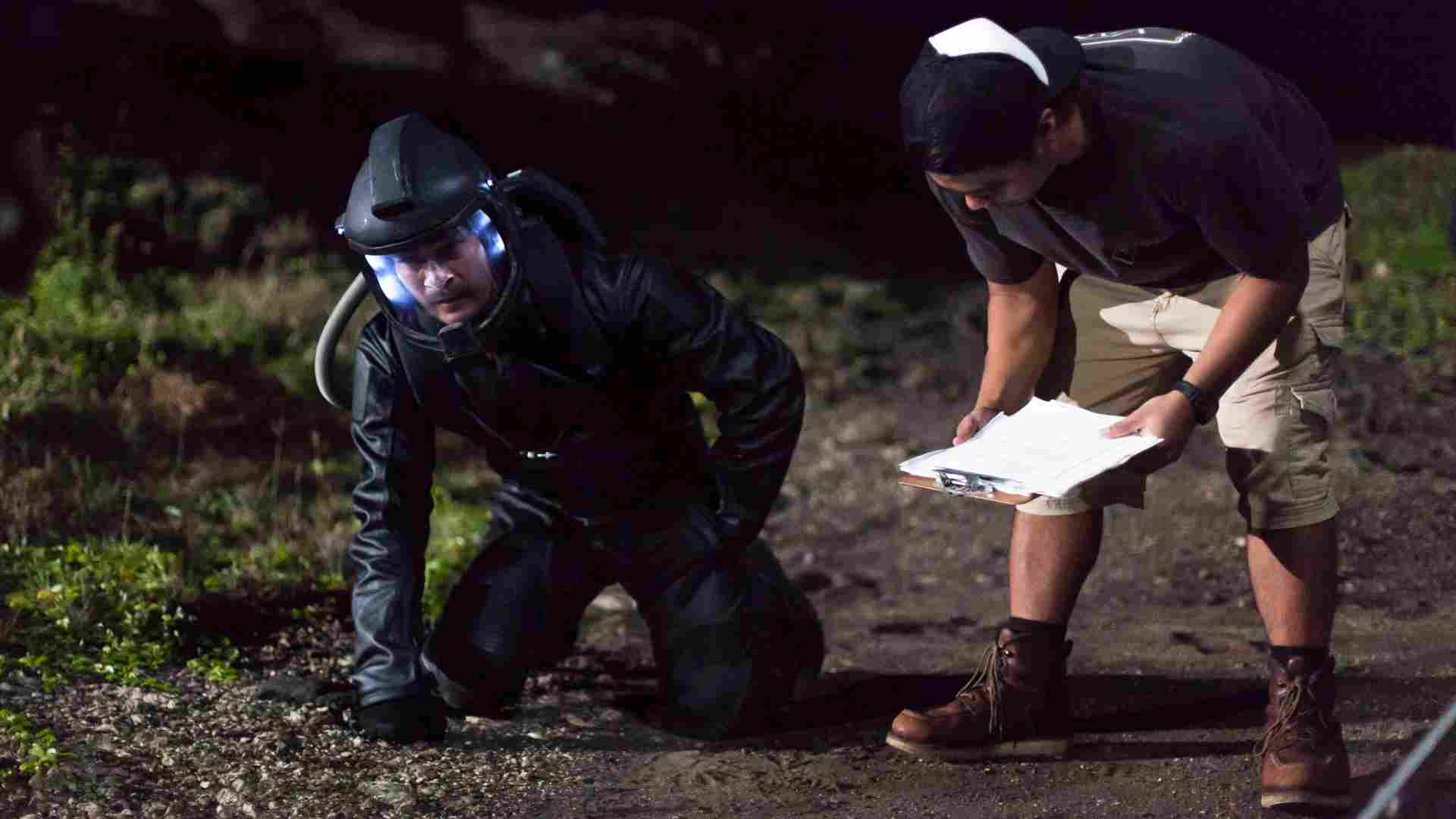
Behind the scenes filming Kālewa
Because of the ‘Ohina Labs and Kālewa, I really learned more about myself and the writing process through the past 3 years. It’s definitely been a huge focus on being into the characters of the stories I tell and putting a lot of myself into it. When it came to Peter and the Colossus, I was learning more about the technical side of stuff. A lot of my personal growth in film right now is getting back into the story side of it and getting into the heart of the characters and the writing.
One of your other works that we’ve had the pleasure of screening at HoMA was the short, Charity. Which was a collaboration between you and local storyteller, Lopaka Kapanui. We had actually premiered the film at one of his storytelling events at the Doris Duke Theatre last year. What was it like to work with him, another artist in another field from the community?
I first met Lopaka on one of his evening ghost tours that went around ‘Iolani Palace and went back to Kawaiahao Cemetery—it was also a date that I was on. Beforehand, all I knew was that I was going on a ghost tour. I knew nothing about Lopaka, but I got so caught up and amazed by how historic it felt and learned so much about the places and the stories. I was terrified the entire time, but it never felt gimmicky. The stories he was telling weren’t told in a way that was gonna scare me, it was the story itself that was chilling. And of course, Lopaka is such a gifted storyteller.
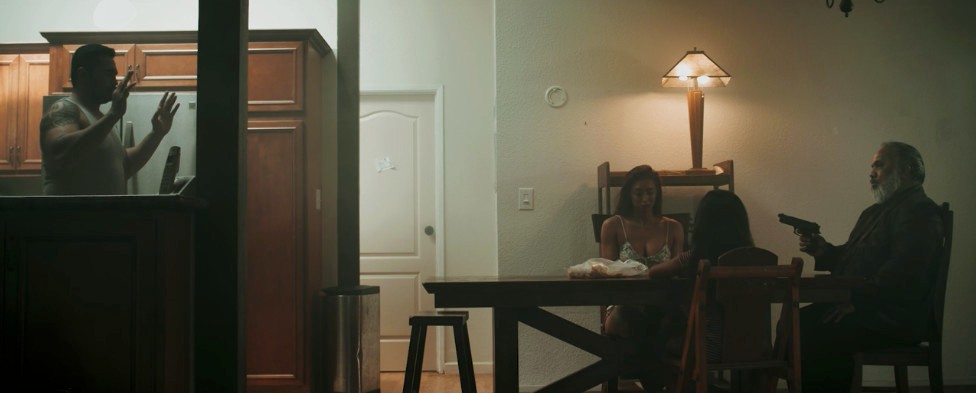
Screenshot
Still from Charity
We kept in contact since then and he’s become a bit of a mentor to me—he’s actually the reason Kālewa was named Kālewa. I talked it over with him for a long time and how I wanted the title of the film to be relevant to the family’s name and Kālewa came out because Kālewa is the Hawaiian word for space or to float, drifting from one place to another. Lopaka is also in Water Like Fire, so he’s always been down to act. We’ve had plenty of times where he and I just go to Zippy’s and hang out and talk story back and forth late into the night. I’m really grateful to have the friendship I do with him, He sends me some of his stories sometimes and Charity was one of those and I was like “This would be a super super awesome short film.” And he was like “Okay, let’s do it.”
It was like no budget and something we just shot and put together, but I had such a blast working with him. Since Charity had its premiere, he’s mentioned there’s been a lot of people asking when they could see it again or if he was going to film more stuff. We don’t have any concrete plans yet, but we do want to work together to do a few more films. Which makes me excited, because I love horror. I love the different nuances in the stories that you can bring into horror. I love horror stories where the horror aspect is the secondary thing—and it’s actually a family drama or there’s all this other stuff going on. When you’re that involved in the story as the audience, that’s what makes it so terrifying because you care about what’s happening to the people on screen.
One of the most noticeable commonalities through the works we’ve just talked about are the visual effects—from the giant in the forest in Peter and the Colossus, to the otherworldly space scapes of Kālewa, and the oozing black curses of Charity—which are all really well done and it’s so exciting to see this world-class quality from a local filmmaker. So what is it about visual effects that speak to you?
I love it! Who knows? Maybe, subliminally, with Jurassic Park being the VHS that my parents put on for me as a kid, that’s where that seed was planted. Jurassic Park was such a huge movie that changed VFX for everything in cinema now. That was the first time they used CGI for the dinosaurs.
I think because those were always the films that I was drawn to as a kid growing up—I’m a huge sci fi person too. I love the escape and the visual spectacle of something otherworldly. Even when I had that little camera at 10 years old, I would want to have things included in the story that I didn’t know how to do. But I just taught myself over time. I really got into Adobe After Effects when I was 13 or 14 and it was a really long process of just playing around with it. I just opened up the program and threw things around, trying to figure out everything because I always wanted to incorporate things like that. That was all the practice I had in high school and through Peter and Colossus. I get so much practice because I enjoy doing it—that’s what allows me to be good at it.
When you’re doing stuff at an indie level as well, it helps to push you creatively to think about how to do things. It’s the perfect playground to test out different visual effects. Even when we were talking about Kālewa at first, I wanted to shoot on Hawaii Island on the lava fields and everything. My producer was like “Yeah, we don’t have money for that so you have to figure out how to shoot it on O‘ahu.” So I was like [exasperatedly] “Okay.” Then I thought “Where on O‘ahu kinda looked otherworldly?” We went out to Kaʻena Point and I was just playing with the color settings with the footage I had and that’s how the look of the alien planet was born. It came out of testing that stuff out.
With all the work you’ve put out and the experiences you’ve had, what do you think films and filmmaking can bring to our communities?
What I’ve been seeing with a lot of people who are staying at home and consuming content is that they’re being forced to go outside their usual comfort zone—they’re trying to get new content after catching up on everything they already know. As much as it mattered before the pandemic, it’s important as ever now to have diverse voices within the content we’re making. In this time, watching different films that give us more of a perspective of different cultures or different social classes help us be more empathetic in real life. So for all of us who’ve been working on that screenplay, when we do have the opportunity to get back to work, let’s get back to work. The art we produce in film with our individual voices is so important.
Finally, growing up here, I remember visiting HoMA as a kid—mostly as part of school field trips. Did you also have a similar experience with the museum? Did you used to come as a child?
Actually, growing up, there were several years where I went to summer classes at the former Academy of Art School. And I was always the naughty kid because it was always like “We’re going to paint a bowl of fruit.” But I was always like “I’m gonna draw a dragon!” I was that kid. I do remember often going to the museum galleries on field trips during those classes. The last class I ever had at the Academy was with this guy from Japan—he had a class on stop motion animation. We made a stop motion animation film in the class and I think I still have it somewhere. So from childhood I’ve had a connection to the museum and academy.